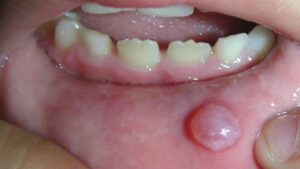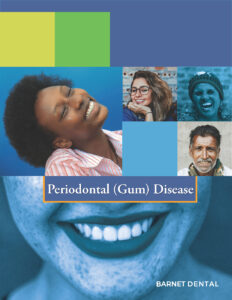Park Avenue Orthodontics
Contact
Hours
- Monday: 9:00am – 9:00pm
- Tuesday: 9:00am – 6:00pm
- Wednesday: 9:00am – 9:00pm
- Thursday: 9:00am – 9:00pm
- Friday: 9:00am – 5:00pm
Park Avenue Orthodontics, nestled in the heart of New York, New York, is committed to providing exceptional orthodontic care in a modern and comfortable setting. Led by a team of skilled orthodontists, our practice combines cutting-edge technology with personalized treatment plans to help patients achieve beautiful and healthy smiles. Whether you’re seeking traditional braces or clear aligners, Park Avenue Orthodontics offers a comprehensive range of orthodontic services tailored to your individual needs.
Orthodontic Services
Traditional Braces
- Metal Braces: Time-tested orthodontic solution for correcting misaligned teeth and bite issues.
- Ceramic Braces: Clear or tooth-colored brackets for a more discreet orthodontic treatment option.
Clear Aligner Therapy
- Invisalign: Removable clear aligners for a virtually invisible way to straighten teeth without traditional braces.
- ClearCorrect: Transparent aligners that gradually shift teeth into alignment for a more aesthetically pleasing smile.
Comprehensive Orthodontic Care
Initial Consultation
- Orthodontic Evaluation: Thorough assessment to determine the most suitable treatment plan for your unique orthodontic needs.
- Customized Treatment Plan: Tailored orthodontic approach designed to achieve optimal results while considering your lifestyle and preferences.
Orthodontic Treatment
- Braces Adjustment: Regular visits to ensure braces or aligners are properly adjusted for consistent progress and comfort.
- Interceptive Orthodontics: Early intervention to address orthodontic issues in children and guide proper jaw and tooth development.
Patient Experience
Comfortable Environment
- Modern Facility: State-of-the-art office equipped with the latest orthodontic technology for efficient and effective treatment.
- Relaxing Atmosphere: Comfortable and inviting environment to help patients feel at ease during their orthodontic appointments.
Personalized Care
- Individualized Attention: Dedicated orthodontic team committed to providing personalized care and addressing your specific concerns throughout your treatment journey.
- Open Communication: Transparent communication about your treatment plan, progress, and any adjustments needed to ensure the best possible outcome.
Periodontal Surgery
Periodontal surgery, also known as gum surgery or periodontal therapy, encompasses a range of surgical procedures aimed at treating advanced gum disease (periodontitis) and addressing structural issues affecting the gums and supporting tissues of the teeth. Periodontal surgery may be recommended when non-surgical treatments, such as scaling and root planing (deep cleaning), are not sufficient to control gum disease or restore periodontal health. Here's an overview of periodontal surgery and its various treatment options:
- Gingival Flap Surgery:
- Gingival flap surgery is a common type of periodontal surgery used to access and clean deep pockets of infection and inflammation that have formed between the gums and teeth. During the procedure, the gums are gently lifted (flapped) back to expose the underlying tooth roots and surrounding bone. The dentist or periodontist then removes tartar deposits, eliminates diseased tissue, and smooths irregular surfaces on the tooth roots to promote gum reattachment and reduce pocket depth. Once the cleaning is complete, the gums are repositioned and sutured back into place.
- Gingivectomy:
- Gingivectomy is a surgical procedure used to remove and reshape excess gum tissue (gingiva) that has overgrown and encroached upon the tooth surfaces, creating a "gummy" smile or making it difficult to keep the teeth clean. During the procedure, the dentist or periodontist carefully trims away the excess gum tissue using specialized surgical instruments, creating a more proportionate and aesthetically pleasing gum line.
- Osseous Surgery (Bone Surgery):
- Osseous surgery is performed to address bone loss and irregularities in the alveolar bone (the bone that supports the teeth) caused by advanced periodontal disease. During the procedure, the dentist or periodontist accesses the diseased bone and removes or reshapes it to eliminate bacteria and create a smoother, more stable bone surface. Bone grafting or guided tissue regeneration techniques may also be used to regenerate lost bone tissue and promote bone growth in areas of significant bone loss.
- Soft Tissue Grafting:
- Soft tissue grafting, also known as gum grafting, is a surgical procedure used to augment or replace lost or damaged gum tissue caused by gum recession or periodontal disease. During the procedure, tissue grafts sourced from the patient's own palate (autografts), donor tissue (allografts), or synthetic materials are placed over exposed tooth roots or areas of deficient gum tissue to improve gum health, reduce tooth sensitivity, and enhance the appearance of the smile.
- Periodontal Plastic Surgery:
- Periodontal plastic surgery encompasses a variety of surgical techniques aimed at improving the aesthetics and function of the gums. This may include procedures such as crown lengthening to expose more of the tooth structure, ridge augmentation to correct deformities in the jawbone, and frenectomy to remove abnormal frenulum attachments that restrict movement of the lips or tongue.
- Guided Tissue Regeneration (GTR):
- Guided tissue regeneration is a regenerative periodontal therapy used to promote the regeneration of lost periodontal tissues, including bone, cementum, and periodontal ligaments, in areas affected by advanced gum disease. During the procedure, barrier membranes are placed over the exposed root surfaces to prevent soft tissue ingrowth and facilitate the growth of new bone and periodontal ligament attachment.
Periodontal surgery is typically performed under local anesthesia to ensure patient comfort during the procedure. Depending on the complexity of the case and the specific treatment goals, multiple surgical appointments may be required to achieve optimal results. Following periodontal surgery, patients are usually advised to follow a post-operative care regimen, including maintaining good oral hygiene, taking prescribed medications, and attending follow-up appointments to monitor healing and ensure the success of the treatment. By addressing underlying periodontal issues and restoring gum health, periodontal surgery can help prevent tooth loss, improve oral function, and enhance the overall health and appearance of the smile.
Mucocele
A mucocele is a common benign lesion that forms in the oral cavity when a minor salivary gland duct becomes blocked or damaged, leading to the accumulation of saliva and the formation of a cystic swelling. Mucoceles are typically painless and present as small, translucent or bluish bumps or sacs filled with clear or mucoid fluid. They most commonly occur on the inner surface of the lower lip, but can also develop on the floor of the mouth, tongue, cheeks, or palate.
Here are some key points about mucoceles:
- Types: Mucoceles are classified into two main types based on their etiology and clinical presentation:
- Extravasation mucocele: This type of mucocele occurs when trauma or injury causes the rupture or damage of a minor salivary gland duct, leading to the leakage of saliva into the surrounding soft tissues. Extravasation mucoceles are typically superficial and present as small, fluctuant swellings filled with clear fluid.
- Mucous retention mucocele: Mucous retention mucoceles result from the obstruction or blockage of a minor salivary gland duct, preventing the normal flow of saliva into the oral cavity. Mucous retention mucoceles are typically deeper and may appear as larger, more firm swellings filled with mucoid or gelatinous fluid.
- Causes: The most common cause of mucoceles is trauma or irritation to the oral mucosa, such as lip biting, cheek chewing, or dental procedures. Other potential causes include chronic friction or pressure from ill-fitting dental appliances, lip piercings, or habits such as thumb sucking. Mucoceles can also occur spontaneously without an identifiable cause.
- Symptoms: Mucoceles are usually asymptomatic and may go unnoticed until they become enlarged or bothersome. In some cases, mucoceles may cause discomfort, tenderness, or a sensation of fullness or pressure in the affected area. Rarely, larger mucoceles may interfere with speaking, eating, or swallowing if they grow large enough to obstruct the oral cavity.
- Diagnosis: Diagnosis of mucoceles is typically based on clinical examination and evaluation of the characteristic appearance and location of the lesion. In some cases, imaging studies such as ultrasound or MRI may be performed to further evaluate the extent of the lesion or rule out other potential causes of oral swelling.
- Treatment: Treatment of mucoceles depends on the size, location, and symptoms of the lesion. Small, asymptomatic mucoceles may resolve on their own without intervention and may be managed conservatively with observation and periodic follow-up. Symptomatic or enlarging mucoceles may require surgical excision to remove the cystic swelling and prevent recurrence. The procedure is typically performed by a dentist or oral surgeon and involves local anesthesia to numb the area before removal.
In summary, a mucocele is a benign cystic swelling that forms in the oral cavity due to the blockage or damage of a minor salivary gland duct. While usually painless and benign, mucoceles can cause discomfort or interfere with oral function if they become symptomatic or enlarging. Treatment options vary depending on the size, location, and symptoms of the mucocele but may include observation, drainage, or surgical excision. Early diagnosis and appropriate management are important for preventing complications and achieving favorable outcomes.





